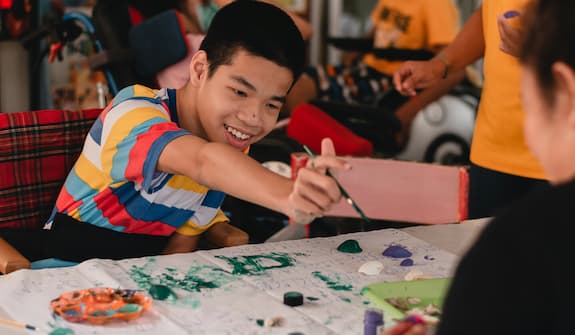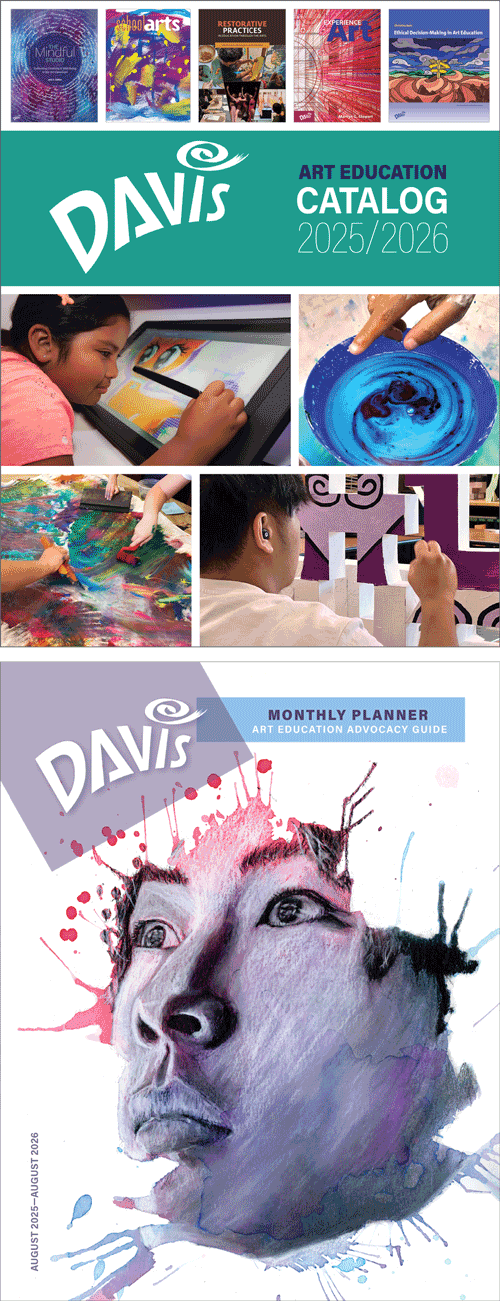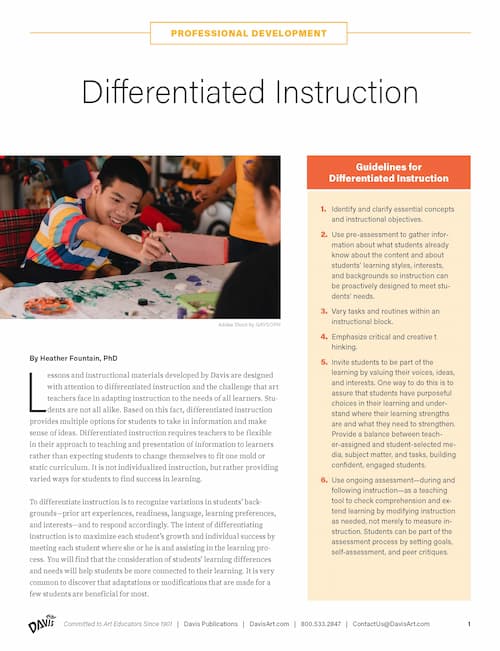6 Guidelines for Differentiating Instruction
Differentiated instruction provides multiple options for students to take in information and make sense of ideas. Differentiated instruction requires teachers to be flexible in their approach to teaching and presentation of information to learners, rather than expecting students to change themselves to fit one mold or static curriculum.

Differentiated Instruction is not individualized instruction but rather providing varied ways for students to find success in learning. To differentiate instruction is to recognize variations in students’ backgrounds—prior art experiences, readiness, language, learning preferences, and interests—and to respond accordingly. The intent of differentiating instruction is to maximize each student’s growth and individual success by meeting each student where she or he is and assisting in the learning process. You will find that the consideration of students’ learning differences and needs will help students be more connected to their learning. It is very common to discover that adaptations or modifications that are made for a few students are beneficial for most.
There are so many ways to differentiate instruction in the art room! Here are six to get you started:
- Identify and clarify essential concepts and instructional objectives.
- Use pre-assessment to gather information about what students already know about the content and about students’ learning styles, interests, and backgrounds, so instruction can be proactively designed to meet students’ needs.
- Vary tasks and routines within an instructional block.
- Emphasize critical and creative thinking.
- Invite students to be part of the learning by valuing their voices, ideas, and interests. One way to do this is to ensure that students have purposeful choices in their learning and understand where their learning strengths are and what they need to strengthen. Provide a balance between teacher-assigned and student-selected media, subject matter, and tasks, building confident, engaged students.
- Use ongoing assessment—during and following instruction—as a teaching tool to check comprehension and extend learning by modifying instruction as needed, not merely to measure instruction. Students can be part of the assessment process by setting goals, self-assessment, and peer critiques.
Learn more about using differentiation to maximize student growth and success in our professional paper by Heather Fountain, PhD, author of the Art Education in Practice Series title, Differentiated Instruction in Art Education.
To differentiate instruction is to recognize variations in students’ backgrounds.
Download a printable PDF of Differentiated Instruction.
Interested in learning more about the importance of differentiating instruction? Check out these additional resources:
Differentiated Instruction Webinar
Differentiated Instruction Book
Accessibility episodes of #K12ArtChat the podcast


Comments